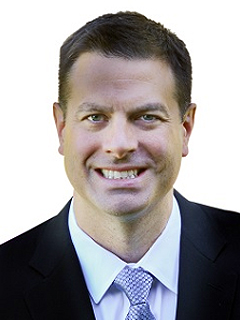How to optimize your workforce
A guide to driving efficiency, effectiveness, and employee experience.

Every company wants a workforce that is productive, capable, and engaged. Call it workforce optimization.
But what exactly is workforce optimization? How do you achieve it? And what does your organization look like once you bring it to life?
Workforce optimization can be described in a number of ways. But essentially, it means a workforce characterized by efficiency, effectiveness, and employee experience.
Elements of an optimized workforce
1
Efficiency
Efficient organizations ensure that workers and their primary activities are located in the right labor markets at the right labor costs. For example, does your organization base its data analysts in New York where salaries generally are at a premium? Or in Kuala Lumpur, where labor costs are low? These decisions may require “deconstructing” the workforce to identify essential skills. Organizations can also increase efficiency automating certain task and creating centralized functions to reduce redundancy.
2
Effectiveness
Effectiveness requires measuring the outcomes of workforce activities that drive your business strategy. This includes using centralized data and analytics to assess enterprise performance management, as well as individualized performance management.
3
Experience
Creating an optimized workforce often requires building an exceptional employee culture that celebrates moments that matter, encourages pride in the brand and the organization, and fosters a sense of individual empowerment.
Workforce optimization in practice
Having a workforce optimization plan helps an organization be more efficient and productive, with an optimally structured workforce and creative, fulfilled teams.
The following are three hypothetical scenarios1 showing how organizations can create workforce optimization plans that deliver efficiency, effectiveness, and employee experience.
Challenge 1: Eliminating excess organizational layers to reduce operational costs
Before
A financial services company assessed its workforce hierarchy and realized it had too many layers between entry-level employees and the CEO. This excess of “spans and layers” was imposing greater expenses on the organization.
After
These high-performing, self-directed teams drove costs down because they eliminated the need for a heavy governance structure and pervasive management oversight, creating new efficiencies. And it also puts decisions where they needed to be made—at the front line of the organization, enhancing employee experience.
Challenge 2: Filling talent gaps through GenAI to speed growth
Before
A software company wanted to grow, but it was taking an inordinate amount of time to hire the talent it needed. The company set out to be a leader in employing GenAI to increase efficiencies and effectiveness in its HR function. They understood that GenAI is designed to replace tasks, not individuals, and should augment current work, unlocking productivity and capacity.
After
The company’s HR function reported faster and improved decision-making processes. Moreover, HR teams were better able to focus on more meaningful tasks, enhancing engagement and the employee experience.
Challenge 3: Minimizing financial reporting errors
Before
A major professional services firm wanted to transform its finance organization to reduce errors and increase efficiency in the reporting of their financial results. The company also wanted to create a more agile workforce by enabling its people to use emerging technology to generate new ideas that could in turn, be fed back to the organization.
After
The GBS allowed the company’s finance talent to deliver greater business value, while fostering maximum employee engagement and sustainable growth. The result was a more agile, innovative, and effective workforce that delivers higher quality results.
1These simulations are a work of fiction. Any names of persons, companies, events or incidents, are fictitious. Any resemblance to actual persons, living or dead, companies or actual events is purely coincidental.
Workforce optimization is crucial for organizations to achieve efficiency, effectiveness, and a positive employee experience. To begin the journey towards an optimized workforce, organizations should assess their level of maturity and readiness for adopting GenAI and applying it toward a transformative workforce optimization plan. This includes finding the right locations for the right work, measuring the success of workforce activities, and creating an enriching culture for stakeholders.
Explore related insights

Deconstruct your workforce to make the most of your organization
Adopt agile workforce models, optimize roles, prioritize coaching, and emphasize upskilling for enhanced innovation.

Shape your workforce with data-driven people analytics
Key guiding principles to help your HR function become a trusted business partner and drive greater employee value.
How KPMG Human Capital Advisory Services can help
KPMG Human Capital Advisory Services can provide your organization with innovative, multi-faceted people solutions and insights and drive accelerated, sustainable business performance. Harness our expertise with enterprise organization transformation, innovative talent strategies, HR, payroll, learning function optimization and implementation of all enabling technologies to develop a future-ready workforce that fuels growth and success for your organization. Embrace the future with KPMG Human Capital Advisory and experience a more innovative approach to building an agile, future-ready organization.
Subscribe to Human Capital Real Insights: Delivering in today's world of work
Subscribe to Human Capital Real Insights for access to research, analysis, and events to help you gain strategic insight and position your enterprise for a competitive advantage.
Meet our team
KPMG Human Capital Advisory Services provides innovative, multi-faceted people solutions to help organizations navigate the challenges they face today. Work with us to ensure your workforce is future ready.



